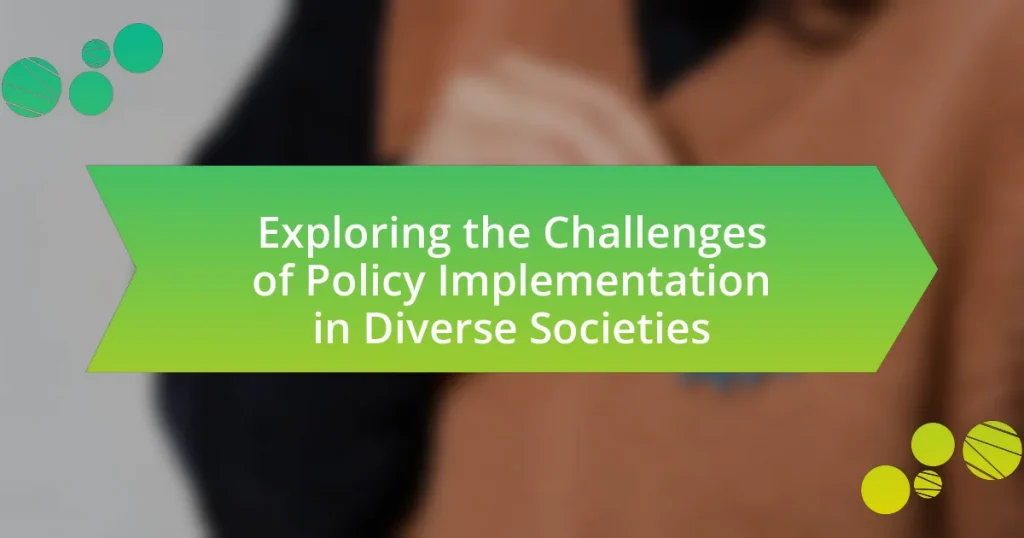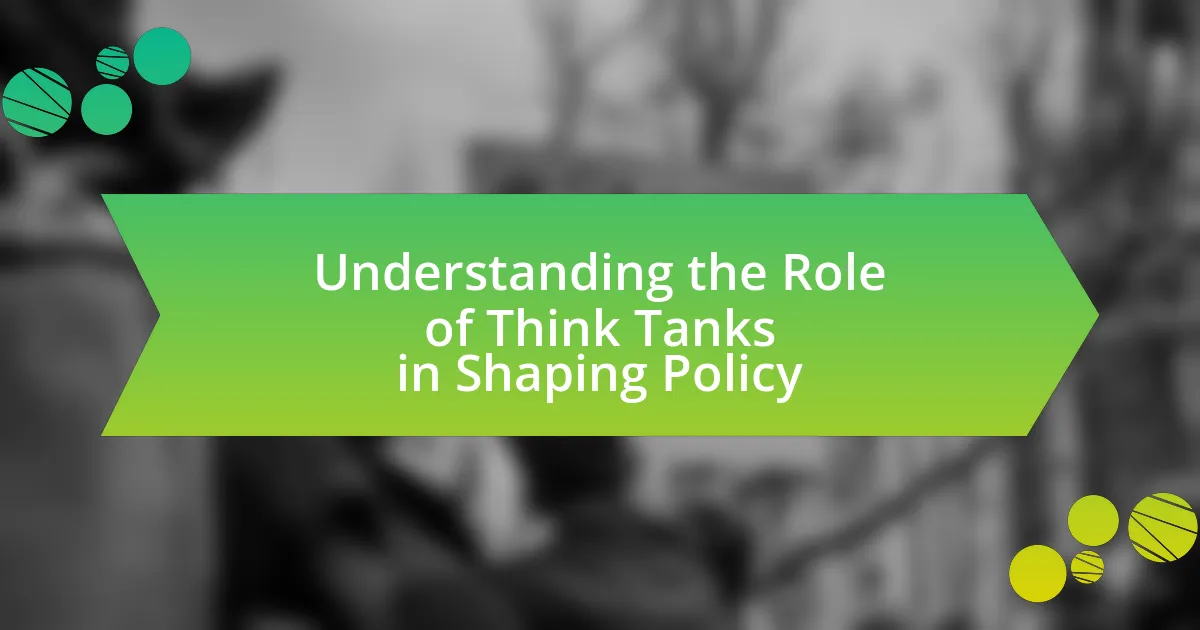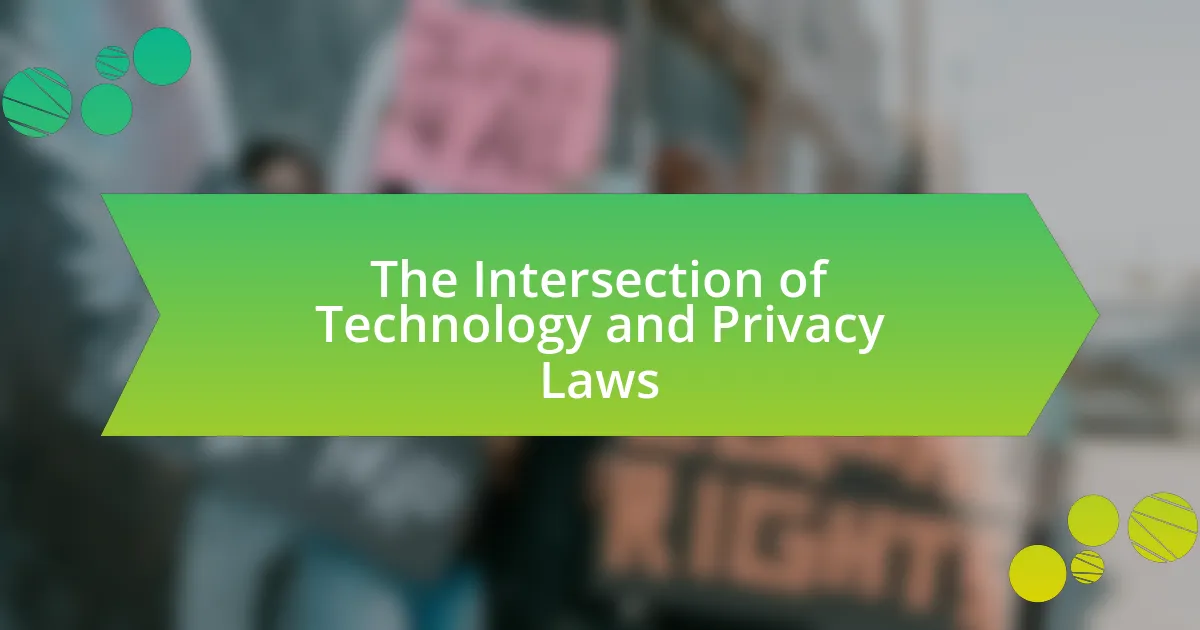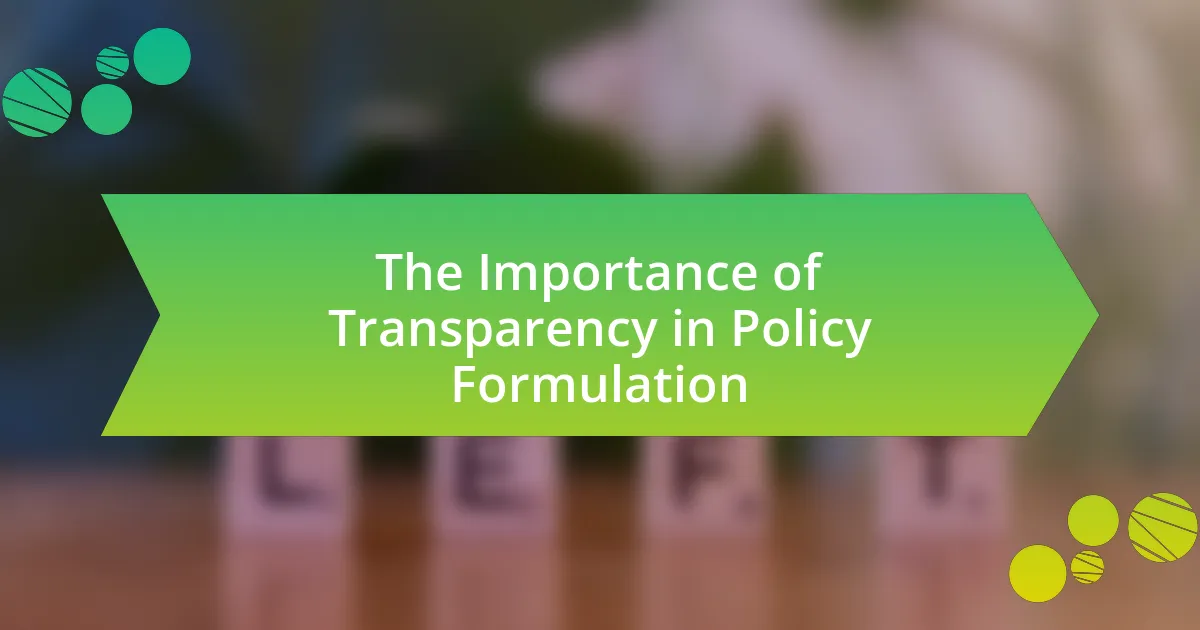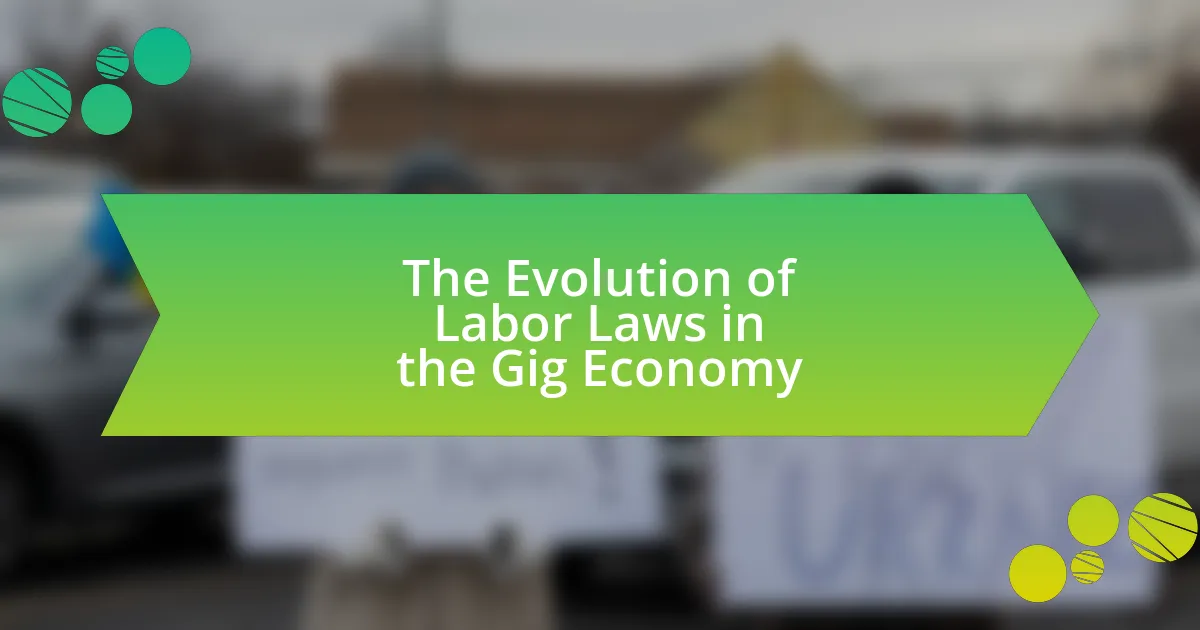The article examines the challenges of policy implementation in diverse societies, highlighting key factors such as cultural differences, varying stakeholder interests, communication barriers, and socioeconomic diversity. It discusses how cultural factors influence policy acceptance and the importance of inclusive engagement strategies to address these barriers. Additionally, the article explores the impact of political diversity on policy effectiveness and the social and economic consequences of ineffective policy implementation. It emphasizes the need for tailored approaches and stakeholder involvement to enhance policy outcomes and mitigate disparities in diverse communities.

What are the key challenges of policy implementation in diverse societies?
The key challenges of policy implementation in diverse societies include cultural differences, varying stakeholder interests, and communication barriers. Cultural differences can lead to misunderstandings and resistance to policies that do not align with local values or practices. For instance, a study by the World Bank highlights that policies often fail when they do not consider the cultural context of the communities they aim to serve. Varying stakeholder interests complicate consensus-building, as different groups may prioritize conflicting goals, making it difficult to achieve a unified approach. Additionally, communication barriers, including language differences and varying levels of literacy, hinder effective dissemination and understanding of policies, which can result in poor compliance and implementation. These challenges underscore the necessity for tailored strategies that address the unique characteristics of diverse populations to enhance policy effectiveness.
How do cultural differences impact policy implementation?
Cultural differences significantly impact policy implementation by influencing how policies are perceived, accepted, and enacted within various communities. For instance, policies that do not align with local cultural values may face resistance, leading to ineffective implementation. Research indicates that in multicultural societies, such as Canada, policies that consider cultural contexts tend to achieve higher compliance rates. A study by the Institute for Research on Public Policy found that culturally tailored approaches in policy design enhance community engagement and improve outcomes, demonstrating that understanding cultural nuances is essential for successful policy execution.
What specific cultural factors influence policy acceptance?
Cultural factors that influence policy acceptance include values, beliefs, social norms, and historical context. Values shape how individuals prioritize issues, while beliefs about the effectiveness of policies can determine support or opposition. Social norms dictate acceptable behaviors and attitudes within a community, influencing collective responses to policies. Historical context, including past experiences with governance and policy outcomes, can also affect trust in authorities and willingness to accept new policies. For instance, in societies with a history of government mistrust, policies may face greater resistance regardless of their potential benefits.
How can policymakers address cultural barriers?
Policymakers can address cultural barriers by implementing inclusive engagement strategies that involve diverse community stakeholders in the policy-making process. Engaging with various cultural groups ensures that their perspectives and needs are considered, which can lead to more effective and accepted policies. For instance, research by the Pew Research Center indicates that inclusive practices in policy development can enhance trust and cooperation among different cultural communities, ultimately leading to better policy outcomes.
What role does socioeconomic diversity play in policy challenges?
Socioeconomic diversity significantly complicates policy challenges by creating varying needs and priorities among different groups. This diversity leads to disparities in access to resources, education, and healthcare, which policymakers must address to ensure equitable outcomes. For instance, a study by the Pew Research Center found that socioeconomic status influences individuals’ perspectives on issues such as taxation and social services, making it essential for policies to be inclusive and representative of all socioeconomic backgrounds. Consequently, failure to consider this diversity can result in policies that favor certain groups over others, exacerbating inequality and hindering effective implementation.
How do economic disparities affect policy effectiveness?
Economic disparities significantly undermine policy effectiveness by creating unequal access to resources and opportunities. When policies are designed without considering the varying economic conditions of different populations, they often fail to address the specific needs of disadvantaged groups. For instance, a study by the Brookings Institution found that policies aimed at improving education outcomes are less effective in low-income areas due to inadequate funding and resources, which perpetuates the cycle of poverty. Additionally, economic disparities can lead to differing levels of political influence, where wealthier individuals or groups can lobby for policies that favor their interests, further marginalizing economically disadvantaged communities. This dynamic illustrates how economic inequality directly impacts the implementation and success of public policies.
What strategies can mitigate socioeconomic barriers in policy implementation?
Strategies that can mitigate socioeconomic barriers in policy implementation include targeted outreach, community engagement, and resource allocation. Targeted outreach ensures that marginalized groups receive information about policies that affect them, thereby increasing awareness and participation. Community engagement fosters collaboration between policymakers and local organizations, which can help tailor policies to meet the specific needs of diverse populations. Resource allocation involves directing funding and support to underserved areas, addressing disparities that hinder effective policy execution. Evidence from the World Bank indicates that inclusive policy frameworks that incorporate these strategies lead to improved outcomes in socioeconomic development, demonstrating their effectiveness in overcoming barriers.
How does political diversity complicate policy implementation?
Political diversity complicates policy implementation by creating divergent interests and priorities among various political groups. This divergence often leads to conflicts and disagreements over policy objectives, making consensus difficult to achieve. For instance, in a politically diverse society, differing ideologies can result in fragmented support for initiatives, as seen in the United States where bipartisan disagreements frequently stall legislative processes. Additionally, political diversity can hinder effective communication and collaboration among stakeholders, further complicating the execution of policies. Research indicates that when political factions prioritize their agendas over collective goals, it can lead to inefficiencies and delays in policy rollout, ultimately undermining the effectiveness of governance.
What are the effects of differing political ideologies on policy acceptance?
Differing political ideologies significantly affect policy acceptance, as individuals’ beliefs shape their perceptions of government actions and initiatives. For instance, conservative ideologies often prioritize limited government intervention and personal responsibility, leading to skepticism towards policies perceived as expansive or redistributive, such as universal healthcare. Conversely, liberal ideologies typically advocate for government involvement in addressing social inequalities, resulting in greater acceptance of policies aimed at social welfare. Research indicates that ideological alignment with policy proposals enhances acceptance; a study by the Pew Research Center found that 70% of liberals support climate change policies, while only 30% of conservatives do. This divergence illustrates how political beliefs can create barriers to consensus on policy issues, complicating implementation in diverse societies.
How can collaboration across political lines enhance policy success?
Collaboration across political lines enhances policy success by fostering bipartisan support, which increases the likelihood of policy acceptance and implementation. When policymakers from different political backgrounds work together, they can combine diverse perspectives and expertise, leading to more comprehensive and effective solutions. For instance, research by the Pew Research Center indicates that bipartisan cooperation can lead to more stable and enduring policies, as seen in successful initiatives like the 2015 Every Student Succeeds Act, which received support from both major political parties. This collaboration not only broadens the base of support but also mitigates polarization, making it easier to address complex societal challenges effectively.
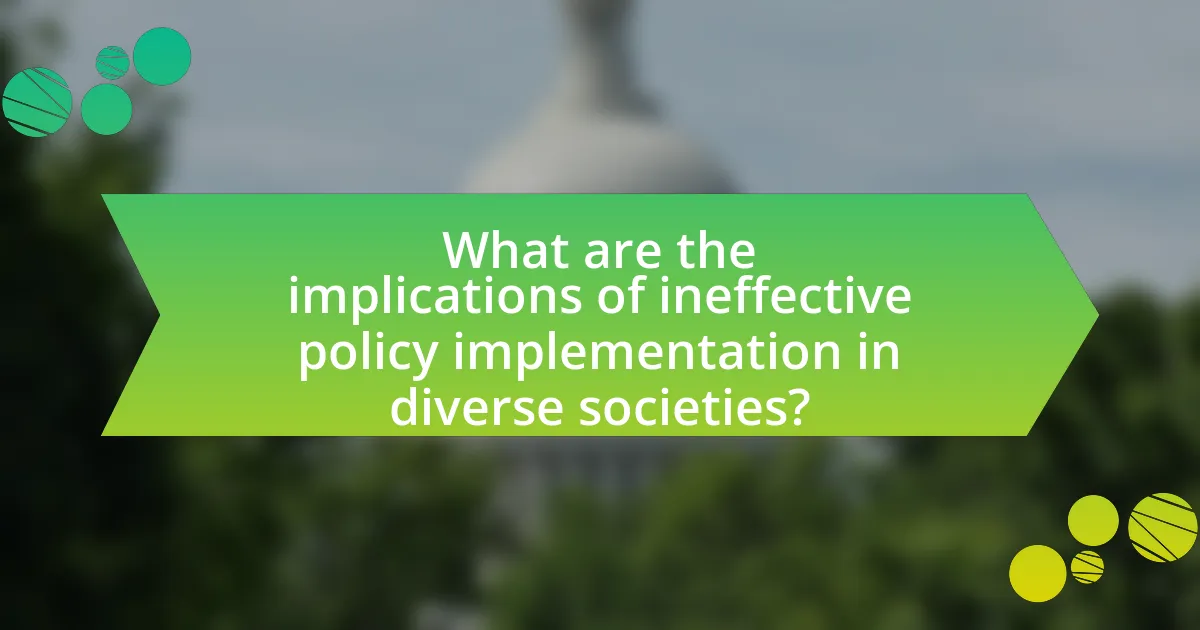
What are the implications of ineffective policy implementation in diverse societies?
Ineffective policy implementation in diverse societies leads to social fragmentation and increased inequality. When policies fail to consider the unique needs and perspectives of various cultural groups, it can result in marginalized communities feeling excluded and disenfranchised. For example, research by the World Bank indicates that ineffective implementation of social policies can exacerbate existing disparities, as seen in countries where minority groups experience lower access to education and healthcare. This lack of equitable resource distribution can foster resentment and conflict among different societal factions, ultimately undermining social cohesion and stability.
What are the social consequences of failed policy implementation?
Failed policy implementation leads to significant social consequences, including increased inequality, social unrest, and erosion of public trust in government institutions. When policies intended to address social issues, such as poverty or education, are not effectively executed, marginalized communities often suffer the most, exacerbating existing disparities. For instance, the failure of housing policies in various urban areas has resulted in heightened homelessness and displacement, illustrating how ineffective strategies can directly impact vulnerable populations. Additionally, when citizens perceive that their government cannot fulfill its commitments, it fosters disillusionment and can lead to protests or civil disorder, as seen in numerous cases worldwide where unmet expectations have sparked social movements. This cycle of failure and unrest can further destabilize communities, making it increasingly difficult to implement future policies successfully.
How does ineffective policy lead to social unrest?
Ineffective policy leads to social unrest by failing to address the needs and grievances of the population, resulting in frustration and disillusionment. When policies do not effectively tackle issues such as economic inequality, lack of access to essential services, or social injustices, marginalized groups may feel ignored and oppressed. Historical examples, such as the Arab Spring, illustrate how government inaction and ineffective reforms can trigger widespread protests and civil disobedience, as citizens demand accountability and change. Additionally, research by the World Bank indicates that poor governance and ineffective public policies can exacerbate social tensions, leading to instability and unrest in diverse societies.
What impact does policy failure have on marginalized communities?
Policy failure significantly exacerbates the challenges faced by marginalized communities, leading to increased poverty, social exclusion, and limited access to essential services. For instance, when housing policies fail, marginalized groups often experience higher rates of homelessness and inadequate living conditions, as evidenced by the National Alliance to End Homelessness, which reported that people of color are disproportionately affected by homelessness due to systemic inequities. Additionally, failures in healthcare policy can result in reduced access to medical services for these communities, contributing to poorer health outcomes, as highlighted by the Kaiser Family Foundation, which found that low-income individuals face barriers to healthcare access that are often exacerbated by ineffective policy measures. Overall, policy failures create a cycle of disadvantage that hinders the ability of marginalized communities to improve their socio-economic status.
How does ineffective policy implementation affect economic development?
Ineffective policy implementation hinders economic development by creating inefficiencies that stifle growth and innovation. When policies are poorly executed, resources are misallocated, leading to increased costs and reduced productivity. For instance, a study by the World Bank found that countries with weak governance and ineffective policy frameworks experience slower economic growth, with GDP growth rates significantly lagging behind those of nations with robust policy implementation. Additionally, ineffective policies can lead to social unrest and decreased investor confidence, further exacerbating economic stagnation.
What are the long-term economic consequences of policy failure?
Long-term economic consequences of policy failure include sustained economic stagnation, increased inequality, and loss of public trust in government institutions. When policies fail, they often lead to inefficient resource allocation, which can stifle economic growth over time. For instance, the 2008 financial crisis, largely attributed to regulatory failures, resulted in a prolonged recession, with GDP growth rates in many countries remaining below pre-crisis levels for years. Additionally, policy failures can exacerbate income inequality, as marginalized groups often bear the brunt of economic downturns, leading to a widening wealth gap. A study by the International Monetary Fund in 2017 highlighted that countries with ineffective policies experienced slower recovery rates and higher unemployment, reinforcing the negative impact of policy failure on long-term economic stability.
How can economic impacts be measured in relation to policy effectiveness?
Economic impacts can be measured in relation to policy effectiveness through quantitative metrics such as GDP growth, employment rates, and income distribution changes. These metrics provide concrete data that reflects the economic conditions before and after policy implementation. For instance, a study by the National Bureau of Economic Research found that policies aimed at increasing minimum wage resulted in a measurable increase in household income and a decrease in poverty rates, demonstrating the effectiveness of such policies in economic terms. Additionally, cost-benefit analysis can be employed to assess the economic returns of specific policies, comparing the costs incurred against the economic benefits realized, thereby providing a clear picture of policy effectiveness.
What are the potential solutions to improve policy implementation?
To improve policy implementation, enhancing stakeholder engagement is essential. Engaging stakeholders, including community members, policymakers, and organizations, fosters collaboration and ensures that diverse perspectives are considered, leading to more effective policies. Research indicates that participatory approaches can increase the legitimacy and acceptance of policies, as seen in the case of the European Union’s public consultations, which have led to more tailored and widely supported regulations. Additionally, providing adequate training and resources for implementers can significantly improve execution efficiency, as evidenced by successful training programs in various countries that have resulted in higher compliance rates and better outcomes.
How can stakeholder engagement enhance policy outcomes?
Stakeholder engagement enhances policy outcomes by fostering collaboration and ensuring that diverse perspectives are considered in the decision-making process. When stakeholders, including community members, organizations, and experts, actively participate, policies are more likely to address the actual needs and concerns of the population. Research indicates that inclusive engagement can lead to increased public trust and support for policies, as seen in the 2018 study by the National Academy of Sciences, which found that stakeholder involvement significantly improved the effectiveness of environmental policies by aligning them with community values and priorities. This alignment not only enhances the relevance of policies but also facilitates smoother implementation and greater compliance among affected parties.
What role does education play in successful policy implementation?
Education plays a crucial role in successful policy implementation by equipping individuals with the knowledge and skills necessary to understand and execute policies effectively. Educated stakeholders, including policymakers, implementers, and the public, are more likely to comprehend the objectives and implications of policies, leading to better adherence and support. For instance, studies have shown that countries with higher education levels tend to experience more effective governance and policy outcomes, as seen in the correlation between educational attainment and the successful implementation of health policies in various nations. This relationship underscores the importance of education in fostering informed participation and accountability in the policy process.
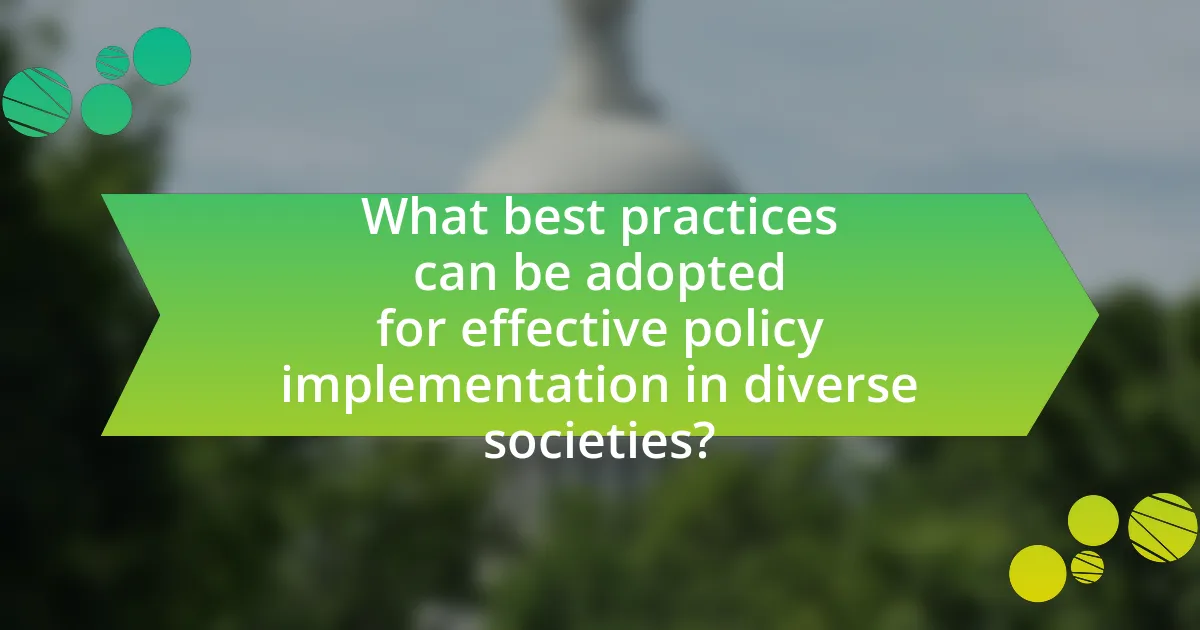
What best practices can be adopted for effective policy implementation in diverse societies?
Effective policy implementation in diverse societies can be achieved through inclusive stakeholder engagement. Engaging various community groups ensures that policies reflect the needs and perspectives of all segments of society, which is crucial for gaining public support and compliance. Research indicates that inclusive processes lead to better policy outcomes; for instance, a study by the World Bank found that participatory governance can enhance service delivery and increase citizen satisfaction. Additionally, employing culturally competent communication strategies helps to bridge gaps between policymakers and diverse populations, fostering trust and understanding.
How can inclusive policymaking improve implementation success?
Inclusive policymaking can improve implementation success by ensuring that diverse perspectives and needs are considered, leading to more effective and widely accepted policies. When policymakers engage various stakeholders, including marginalized groups, they can identify potential barriers and tailor solutions that resonate with the community. Research indicates that inclusive processes enhance trust and cooperation among stakeholders, which is crucial for successful implementation. For example, a study by the World Bank found that projects with stakeholder engagement had a 20% higher success rate compared to those without. This demonstrates that inclusive policymaking not only fosters better policy design but also increases the likelihood of successful execution in diverse societies.
What methods can be used to ensure diverse stakeholder representation?
To ensure diverse stakeholder representation, organizations can implement methods such as inclusive outreach, stakeholder mapping, and participatory decision-making processes. Inclusive outreach involves actively seeking input from underrepresented groups through targeted communication strategies, ensuring that diverse voices are heard. Stakeholder mapping identifies key stakeholders from various demographics, allowing for a comprehensive understanding of the community’s diversity. Participatory decision-making processes engage stakeholders directly in the policy-making process, fostering collaboration and ensuring that multiple perspectives are considered. These methods are supported by research indicating that diverse representation leads to more equitable and effective policy outcomes, as seen in studies highlighting the benefits of inclusive governance in enhancing community trust and policy legitimacy.
How can feedback mechanisms be integrated into the policymaking process?
Feedback mechanisms can be integrated into the policymaking process by establishing structured channels for stakeholder input and data collection. These channels can include public consultations, surveys, and digital platforms that allow citizens to voice their opinions and experiences regarding policies. For instance, the use of participatory budgeting in cities like Porto Alegre, Brazil, has demonstrated how citizen feedback can directly influence budget allocations, leading to more responsive governance. Additionally, integrating feedback loops within policy evaluation frameworks ensures that policymakers can assess the effectiveness of implemented policies and make necessary adjustments based on real-time data and community responses. This approach not only enhances transparency but also fosters trust between the government and the public, ultimately leading to more effective policy outcomes.
What role does communication play in policy implementation?
Communication is essential in policy implementation as it facilitates the dissemination of information, ensures stakeholder engagement, and fosters collaboration among various actors. Effective communication helps clarify policy objectives, align expectations, and address concerns, which is crucial for gaining support and compliance from affected communities. Research indicates that policies with strong communication strategies are more likely to succeed; for instance, a study by the World Bank found that effective communication can increase the likelihood of policy acceptance by up to 30%. Thus, communication serves as a vital tool in bridging gaps between policymakers and the public, ultimately enhancing the effectiveness of policy implementation in diverse societies.
How can clear messaging enhance public understanding of policies?
Clear messaging enhances public understanding of policies by simplifying complex information, making it accessible and relatable to diverse audiences. When policies are communicated in straightforward language, individuals can grasp the implications and benefits more easily, leading to increased engagement and compliance. Research indicates that clear communication can improve public trust and reduce misinformation; for instance, a study by the Pew Research Center found that 70% of respondents felt more informed about policies when they were presented in clear, concise formats. This clarity fosters informed decision-making and encourages active participation in civic matters, ultimately contributing to more effective policy implementation in diverse societies.
What strategies can be employed to communicate effectively with diverse populations?
To communicate effectively with diverse populations, employing strategies such as active listening, cultural competence, and tailored messaging is essential. Active listening involves fully engaging with the speaker, ensuring understanding and respect for their perspectives. Cultural competence requires awareness and sensitivity to different cultural backgrounds, which can enhance trust and rapport. Tailored messaging means adapting communication styles and content to fit the audience’s specific cultural and linguistic needs, thereby improving clarity and receptiveness. Research indicates that organizations that implement these strategies see improved engagement and satisfaction among diverse groups, as evidenced by studies showing that culturally competent communication can lead to better outcomes in community health initiatives and public policy acceptance.
What are the key lessons learned from successful policy implementations?
Key lessons learned from successful policy implementations include the importance of stakeholder engagement, evidence-based decision-making, and adaptability. Stakeholder engagement ensures that the perspectives and needs of affected communities are considered, which enhances buy-in and compliance. Evidence-based decision-making relies on data and research to inform policies, leading to more effective outcomes; for instance, the implementation of the Affordable Care Act in the United States was guided by extensive research on healthcare access and outcomes. Adaptability allows policies to evolve in response to changing circumstances and feedback, as seen in the iterative adjustments made during the implementation of the European Union’s Common Agricultural Policy, which improved its effectiveness over time. These lessons underscore the necessity of a collaborative, informed, and flexible approach in policy implementation.
What case studies illustrate effective policy implementation in diverse societies?
Case studies that illustrate effective policy implementation in diverse societies include the integration of multicultural education in Canada and the participatory budgeting process in Porto Alegre, Brazil. In Canada, the policy aimed at promoting multiculturalism has successfully fostered social cohesion and inclusion among various ethnic groups, evidenced by the positive outcomes in community engagement and reduced racial tensions. In Porto Alegre, the participatory budgeting initiative has empowered citizens from diverse backgrounds to influence local government spending, resulting in improved public services and increased civic participation, as demonstrated by a significant rise in community satisfaction and investment in underserved areas.
How can these lessons be applied to future policymaking efforts?
Lessons from past policy implementations can be applied to future policymaking efforts by emphasizing the importance of inclusivity and stakeholder engagement. For instance, research indicates that policies developed with input from diverse community representatives are more likely to succeed, as seen in the participatory budgeting initiatives in Brazil, which increased public trust and resource allocation efficiency. Additionally, understanding cultural contexts and addressing specific community needs can enhance policy effectiveness, as demonstrated by the tailored health interventions in multicultural urban areas that led to improved health outcomes. These examples illustrate that incorporating lessons from diverse societal experiences can lead to more effective and equitable policymaking.
